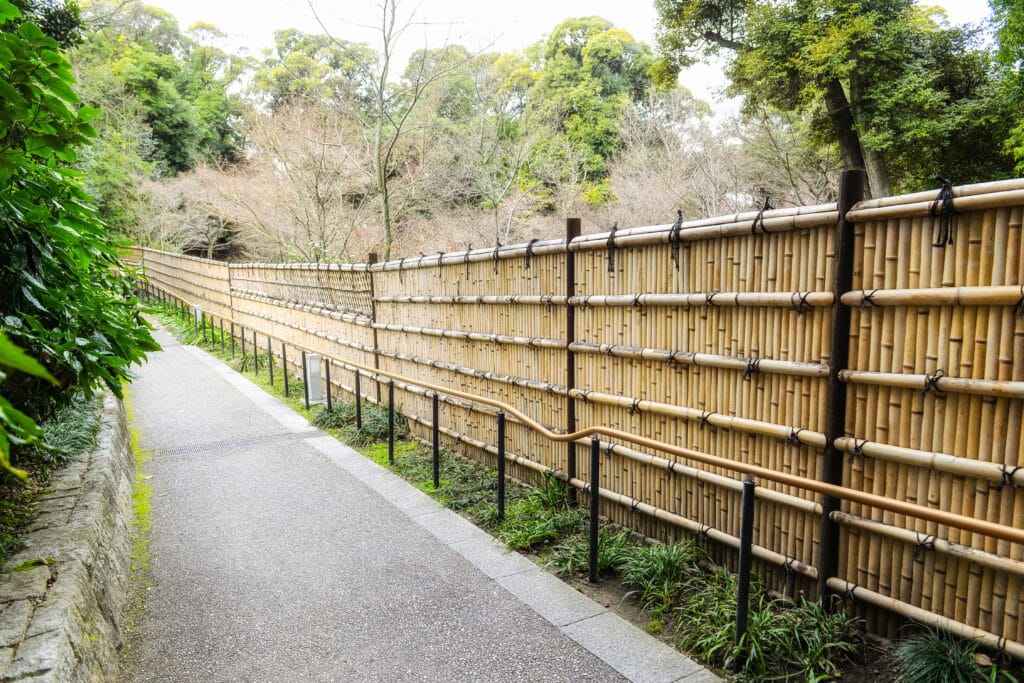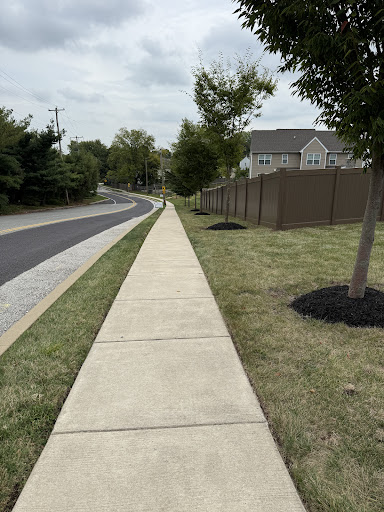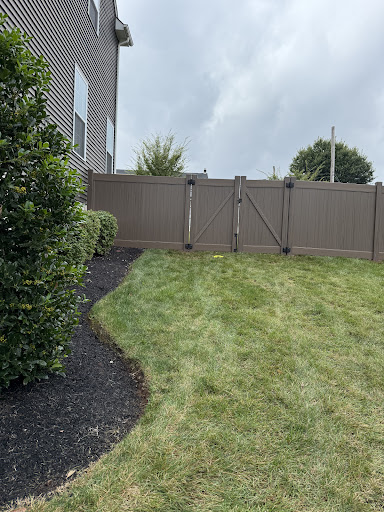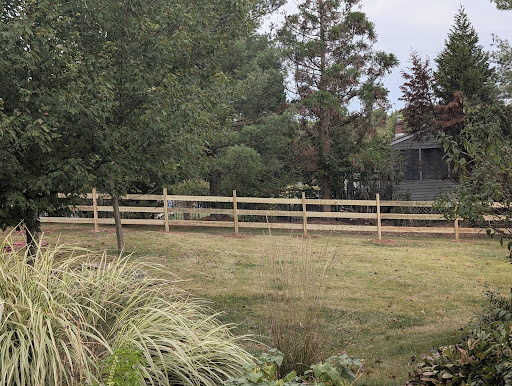Fence and Railing
At Montco Fence, we understand that both fences and railings are essential components when it comes to enhancing the beauty and functionality of your property. Although they may appear similar at first glance, fences and railings serve distinct purposes, each shaped by specific design elements and material choices. If you’re in Pennsylvania and considering installing a fence to boost curb appeal, ensure privacy, or enhance security, it’s vital to understand the unique benefits of various materials like wrought iron, aluminum, and vinyl.

Purpose and Functions
Fence and railings are typically used to mark boundaries, provide privacy, or secure a perimeter. Imagine a boundary that’s equal parts stylish and functional that’s what fences bring to the table.
From encircling your backyard to shielding your property from wildlife, to creating a safe haven for your family’s youngest members,. On the other hand, railings are designed primarily for safety and support. Falling from elevated areas like decks or balconies is a serious risk, but somehow, we often overlook it.
Fortunately, these safety features can literally be a lifesaver, preserving our balance and stopping accidents in their tracks. For example, handrails are crucial safety items that prevent one of the most common and severe household accidents—falling down a stairway.
In public buildings and schools, handrails are mandated on every stairway to protect people from falling. They are often a requirement in residential stairways as well, depending on local building codes. In construction, where one misstep can be catastrophic, handrails aren’t just a nicety; they’re a necessity, offering workers a trustworthy anchor and protecting them from the devastating consequences of a fall.
Materials and Design of Fence and Railing
The choice of materials for fence and railing is diverse, each offering its own benefits and aesthetic appeal. From the warmth of wood to the cool sheen of metal, fences can be crafted from a multitude of materials to complement any landscape or architectural style and accommodate any budget. The design of a fence can range from simple post-and-rail configurations to ornate wrought-iron structures.
From stylish wooden railings to sleek metal ones, guardrails and handrails come in a surprisingly wide range of materials, including glass and composite options. The design and material should align with the specific function of the railing, whether it’s for a staircase, a deck, or a balcony. For maximum longevity, metal railings make a solid choice, yet nothing beats the warm, organic feel of wood for capturing a home’s unique character. Factors like the local climate, maintenance requirements, and cost will influence the material choice for both fences and railings.
Ready to surround your property with a fence or railing? Before you break out the schematics, make sure you’re aware of the differences between these two outdoor essentials – it’s the only way to make a choice that truly fits your needs. You’re probably asking yourself, “How do I know I’m choosing the right structure for my property?” It starts with understanding the lingo. What’s a rail, anyway? And how does it differ from a fence, or a railing, or a balustrade? Cutting through the confusion will put you on the path to making the best decision for your property.
Behind every beautiful property lies a cleverly designed fence or railing system, carefully selected to balance safety concerns, privacy needs, and aesthetic aspirations.. Getting it right can elevate your outdoor space to a whole new level.
Differences Between Fence and Railing
When considering property enhancements, clarity on the distinction between fences and railings is pivotal. Safeguards and security checks vary from structure to structure, a deliberate design to keep everyone and everything safe.
Definition and Application
The primary difference of fence and railing lies in their definition and application. By cordoning off your property, a sturdy fence does more than just keep people out – it lets you define your personal domain, enjoy the fruits of your labor, and proudly proclaim “this is mine.” Where hazards lurk, railings come to the rescue, offering a sturdy handhold and reassurance in precarious spots.
Regarding application, fences can be found around yards, gardens, industrial sites, or as part of agricultural land to contain livestock. Railings are commonly seen alongside stairs, ramps, decks, and balconies. A fall can be a major hazard, but they step in to prevent just that from occurring.
Fences and railings may seem similar, but what sets them apart? Investigate the differences and get to the bottom of what makes a railing fence tick.
Safety and Security Aspects of Fence and Railing
Railings need to offer something to grab in the event of missed footing, trips, or losing balance, effectively reducing the risk of serious injury. The safety standards for staircases stipulate that a staircase less than 1m wide requires at least one handrail, while a staircase over 1m wide mandates handrails on both sides. To enhance safety, multiple handrails at varying heights can be considered, catering to users of all ages, including young children.
By marking the edges of an area and controlling who comes and goes, fences become a first line of defense against potential hazards and unwanted intrusions. Say goodbye to trespassers with a security fence that’s kitted out with barbed wire, cameras, and alarms – a triple threat that’s hard to breach.
Both fences and railings must adhere to local building codes and regulations. Homeowners and business owners contemplating the installation of these structures should be aware of these requirements and may find relevant information in articles such as do you need planning permission for post and rail fencing? and can you put a railing on concrete?.
So, you’re deciding on property enhancements and wondering what kind of barrier to install? Getting a handle on the differences between fences and railings is crucial here, since each serves a distinct purpose and tackles specific safety and security concerns. Making the right call means considering the unique strengths of each option – when you understand what each one brings to the table, you can install them with confidence.
From decorative accents to functional barriers, fences are more than just boundaries – they’re an extension of your property’s personality.
One often-overlooked aspect of property ownership is the fence – but it’s essential for achieving that perfect blend of comfort, safety, and aesthetics.
Think of it as a shield, asentinel that demarcates your personal space while also boosting your property’s visual appeal. Whether you’re looking to secure your backyard, attractively bound your commercial property, or mark a territorial boundary, Pennsylvanians need a thorough understanding of fence types to make an educated choice.
Fence-building 101 starts with two fundamental options – let’s break them down. Two vital types of fencing solutions cater to distinct needs: ones that guard your privacy and others that keep pets and wildlife safe.
Privacy Fences
Privacy fences are designed to offer seclusion by blocking the view of the enclosed area from the outside world. These fences are characterized by solid panels or closely spaced vertical boards without gaps, ensuring that prying eyes cannot see through. Wood, vinyl, and composite materials are popular choices for privacy fences because they simultaneously block out prying eyes, foil would-be intruders, and dampen outside noise. In neighborhoods everywhere, you’ll find homeowners falling in love with privacy fences, which seamlessly carve out private sanctuaries from their outdoor spaces.
Building a private oasis in your backyard starts with selecting the right fence. Here’s a quick rundown of the materials and features to consider.
| Material | Features |
|---|---|
| Wood | Natural look, customizable, requires maintenance |
| Vinyl | Low maintenance, durable, various styles |
| Composite | Eco-friendly, durable, mimics wood appearance |
Privacy fences are not just for isolation; they can also enhance the curb appeal of a property. Stylish designs range from the traditional charm of a white picket fence to more modern and ornamental designs, catering to various aesthetic preferences ( MMC Fencing & Railing ). Privacy fences and railings both have their perks, but which one is right for you? Our fence and railing comparison breaks it down.
Pet and Wildlife Fences
Pet and wildlife fences are specialized structures designed to keep animals safe and secure within a designated area or to protect wildlife and mitigate human-wildlife conflicts. A pet fence typically includes traditional fencing options such as wooden, chain-link, or vinyl fences that enclose an area, preventing pets from wandering off while allowing them the freedom to roam within safe limits. Safeguarding pets is a top priority for many owners, and fences that offer a balance of security and visibility can be a lifesaver – or at least a bark-saver!
Wildlife fences, on the other hand, cater to a broader purpose. Crops, roadways, and vulnerable ecosystems all have one thing in common: they need safeguarding. That’s where they come in – serving as a shield against harm. To stop large mammals from causing highway chaos and protect fragile ecosystems, wildlife fences are engineered with careful attention to height, material, and mesh size.
| Fence Type | Purpose | Material | Design Features |
|---|---|---|---|
| Pet Fence | Containment of pets | Wood, Chain-link, Vinyl | Visibility, security, height appropriate for pet size |
| Wildlife Fence | Protection of wildlife and crops | Various, including specialized mesh | Height, durability, mesh size to deter specific animals |
Understanding the various types of fences and their applications can help property owners make decisions that enhance their property while serving practical purposes. Whether seeking privacy, securing pets, or protecting local wildlife, there is a fence solution tailored to meet those needs.
Types of Railings
Railings serve as both a critical safety feature and an aesthetic element for properties. When it comes to stairs, balconies, and decks, safety take a huge leap forward with these guarantees in place, especially where one wrong step can be disastrous. Safety first: that’s why we’re going to investigate handrails and guardrails, two essential types of railings, and the different materials used to build them.
Falling victim to a tumble is all too easy without the right safeguards in place. That’s where handrails and guardrails come in – serving as indispensable sentinels against plunges and ensuring public spaces remain accident-free zones.
In the blur of a split second, a stairway fall can occur – and it’s often the result of a harmless misstep. But a solid handrail can be the hands that catch you, sparing you from the woes of a nasty tumble and the potentially long road to recovery.
Ascending or descending stairs can be a hazard, but with safety devices in place, individuals can tread with confidence, shielded from the risk of tumbling over the edge. According to various standards for public buildings and schools, handrails are mandated on every stairway, with some local building codes also requiring them in residential stairways.
A handrail, also known as a banister, is designed to be grasped by the hand for physical support. It can be made from various materials and may be wall-mounted, extend from the side of a stair rail, or sit atop balusters on an open staircase. Conversely, a railing, sometimes referred to as a guardrail, acts as a protective barrier to prevent falls from the sides of stairs or elevated areas.
Looking for a crash course on handrails and guardrails? Our blog is loaded with information on their features, benefits, and must-haves.
Considering All Your Material Choices From pros to cons, let’s break down what makes each material a good (or not-so-good) fit.
When deciding on railing materials, ask yourself: will they stand the test of time, require frequent repairs, add visual appeal, and fit your budget? Here are some common material options for railings:
Wood: Offers a classic, warm appearance but requires regular maintenance to prevent rot and decay.
Metal: Includes options like steel, aluminum, and wrought iron, which are durable and offer a range of design possibilities. Metal can vary in price and may require treatments to prevent rust.
Vinyl: A low-maintenance option that resists weather and insects but may lack the strength of metal or wood.
Glass: Provides a modern look and preserves views but can be more expensive and requires regular cleaning to maintain clarity.
Composite: A blend of wood fibers and plastic, composite railings offer the look of wood with reduced maintenance needs.
The property owner’s vision is what drives the material selection process, as each option comes with its pros and cons that must be carefully weighed. Go beyond the surface level and discover the thought process behind our material choices. We’re sharing the specifics. Essential components for outdoor space organization are fence and railing products.
Final Thoughts: Fence and Railing
When selecting fence and railing, don’t just think dollars and cents; consider how they’ll blend with the property’s architectural style, and whether they’ll help create a cohesive, functional space. Curiosity getting the better of you? Find out what sets railing fences apart from the rest and why they’re still loved today. With some further exploration. Railings do double duty, contributing to a sense of security while also adding a touch of style to any setting. Contact us now!
















